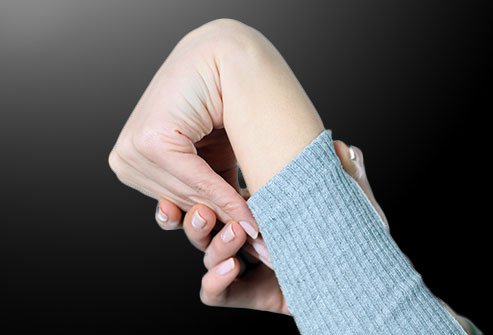Hypermobile Ehlers-Danlos Syndrome is a connective tissue disorder that affects the sufferer’s joints, skins, and blood vessel walls. People with this condition often have joints that are too flexible, and skin that’s a little fragile.
Hypermobile Ehlers-Danlos Syndrome is an inherited disorder that has a wide range of symptoms. However, not every sufferer of this condition experiences the same symptoms.
Some of the symptoms associated with hEDS include:
- Joint hypermobility
- Joint pain
- Clicking joints
- Fatigue
- Heartburn
- Constipation
- Dizziness
- Stress incontinence
- Fragile skin
- Organ prolapse
As previously mentioned, not everyone with this condition will experience the same symptoms. Some people may have most of the above symptoms, others may only have a few.
Headaches and Migraines
Many people who suffer from hEDS tend to experience headaches and migraines from time to time. Headache and migraine relief medication is easily available. However, it’s not always clear why those with this condition suffer this way.
There is, perhaps a sensitivity to light as bright lights can make headaches and migraines worse. However, it has also been suggested that a hEDS sufferer’s eyes don’t react to light properly. Whatever the case may be, many of those with hEDS seem to be very sensitive to light.
The Normal Range of Movement
People with Hypermobile Ehlers-Danlos Syndrome may be told to stay within the normal range of movement. Regardless of which health professional says this, it’s not always clear what the normal range of movement is. This is because people with hEDS tend to have much more movement than many others. For example, some people can bend their fingers the “Wrong way”, others can stretch their skin. Some people can turn their necks so much that they can see behind them.
What is considered to be the normal range of movement for some, is not the same for others. Therefore, those with this condition need to learn what the normal range of movement is. Being aware of this can help to keep joints and tendons in place.
Treatment for Ehlers-Danlos Syndrome
While there is no specific treatment for this condition, sufferers can get some medical help. A physical therapist can teach the sufferer exercises to help them strengthen their joints. An occupational therapist can encourage those with this condition to manage their day-to-day activities. Therapy can also be useful if the sufferer experiences long-term pain.
Medication is often prescribed for those with this condition. The pain of a joint or tendon coming out of place can result in the need for painkillers. In the meantime, physical therapy can help to strengthen those joints so they’re less likely to cause future issues.
While there is no cure for this condition as yet, many sufferers tend to be in less pain as they age. This is because like everyone else, the older they get, the less mobile they become. What this means is they will be less flexible and therefore less likely to injure themselves. In some cases, getting old can be a blessing.
